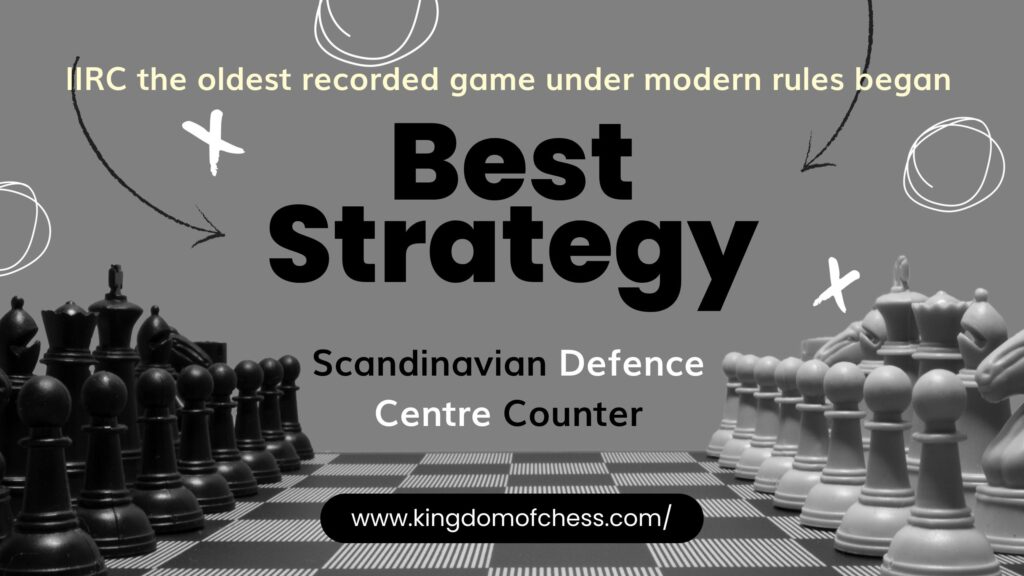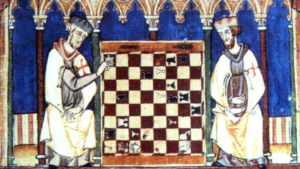Advanced-Chess Lessons For Strategic Brilliance
Chess openings have evolved extensively over the centuries as strategic ideas have advanced. One of the earliest recorded games under modern rules saw the opening moves 1.e4 d5. This has become known as the Centre Counter or Scandinavian Defense. While not as ubiquitous today at high levels, it remains a practical option for black that offers instructional value.
The Origin and Theory of the Centre Counter
- 1.e4 d5 first emerged in the late 18th and early 19th centuries among players in Scandinavia and Northern Europe. It was occasionally employed as a surprise weapon against the standard King’s Pawn opening 1.e4. Rather than immediately occupy the center with 1…e5, black first challenges white’s control over d4 before advancing their own central pawns.
- This proactive strike against white’s center is the genesis of the name “Centre Counter.” Black tempts white’s pawn forward to d4 where it can potentially come under attack. This also allowed black to avoid the open tactical lines of the Ruy Lopez or Italian Game.
- While the Centre Counter fell out of favor at higher competitive levels, it has remained a steady option for club players. It offers understandable plans without extensive memorization. Against improving amateurs, its practicality still provides winning chances if handled carefully.
Using 1.e4 d5 to Develop Core Chess Skills
Advanced Chess Lessons
- For intermediate and advanced players, studying the ideas and plans from both sides of 1.e4 d5 positions is highly educational. It provides an advanced chess lesson in pawn structures, piece coordination, and central tension that will elevate your overall strategic understanding.
- Key concepts to absorb include controlling e4 and d4, kingside vs queenside play, and mobilizing vs immobilizing the center. Playing practice games as black in a Centre Counter teaches you valuable defensive technique.
Chess Training Online
- Modern chess training online sites provide extensive tools to help you learn and master openings like the Centre Counter. You can study the position, play training games from both sides, analyze grandmaster encounters, and take interactive lessons.
- Use the computer analysis functions to objectively evaluate move choices and become familiar with potential plans. Drill common tactical patterns that can arise from the position. Annotating your practice games reinforces positive learning.
Chess Strategy for Beginners
For those new to chess, the 1.e4 d5 line provides a clear method to start implementing core strategic principles:
- Control the center with judicious pawn moves
- Develop knights before bishops
- Castle early for king safety
- Create a pawn shelter around your king
- Utilize open lines for your rooks
The unambiguous positional themes make grasping fundamentals intuitive compared to complex tactical openings.
Conclusion
While less glamorous than trendier openings, the venerable Centre Counter still offers instructional value to players at all levels. Study its history, learn its key ideas, and add this solid weapon to your personal chess repertoire.
Frequently Asked Questions
For white, establish control over e4 and d4, mobilize the center pawns, castle kingside, and launch an attack on the queenside. For black, challenge white’s center, create counterplay on the kingside, and aim to immobilize the center.
Common tactical motifs include a minority attack with b4-b5, sacrifices on e4 or d4, and aggressive pawn storms on opposite sides of the board. Tactics often revolve around central pawn tension.
The pawn structure shares similarities to openings like the Caro-Kann and Slav Defense. Overall strategic themes resemble the Scandinavian Defense since black often castles queenside.
Yes, it provides a solid positional foundation without excessive theory. Beginners can focus on applying basic principles. Many club players employ it successfully.
It can struggle against hyper-aggressive openings like the King’s Gambit which aim for quick attacks before black can consolidate. Against slower systems, it remains viable.







